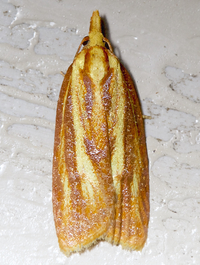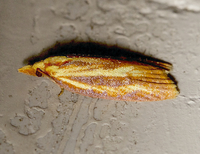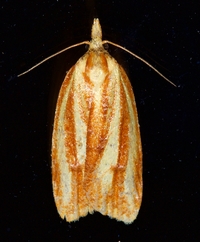| Larval Host Plants: The larvae specialize on conifers, particularly pines, but also regularly use spruces and firs; on rare occasions they may feed incidentally on other taxa such as hardwoods (MacKay, 1962; Prentice, 1966; Maier et al., 2004; Robinson et al., 2010; Powell and Brown, 2012). Species that appear to be primary hosts include Balsam Fir (Abies balsamea), White Spruce (Picea glauca), Black Spruce (Picea mariana), Jack Pine (Pinus banksiana), Red Pine (P. resinosa), Pitch Pine (P. rigida), Scotch Pine (P. sylvestris), and Eastern White Pine (P. strobus). Other species that are used incidentally include serviceberries (Amelanchier), Common Juniper (Juniperus communis), Tamarack (Larix laricina), Bigtooth Aspen (Populus grandidentata), Quaking Aspen (P. tremuloides), Choke Cherry (Prunus virginiana), and Northern White Cedar (Thuja occidentalis). A site in Madison County where this species has been repeatedly collected has Pitch Pine, Eastern White Pine, and Virginia Pine, but the host has not been confirmed. - View |

 »
»



 »
»

